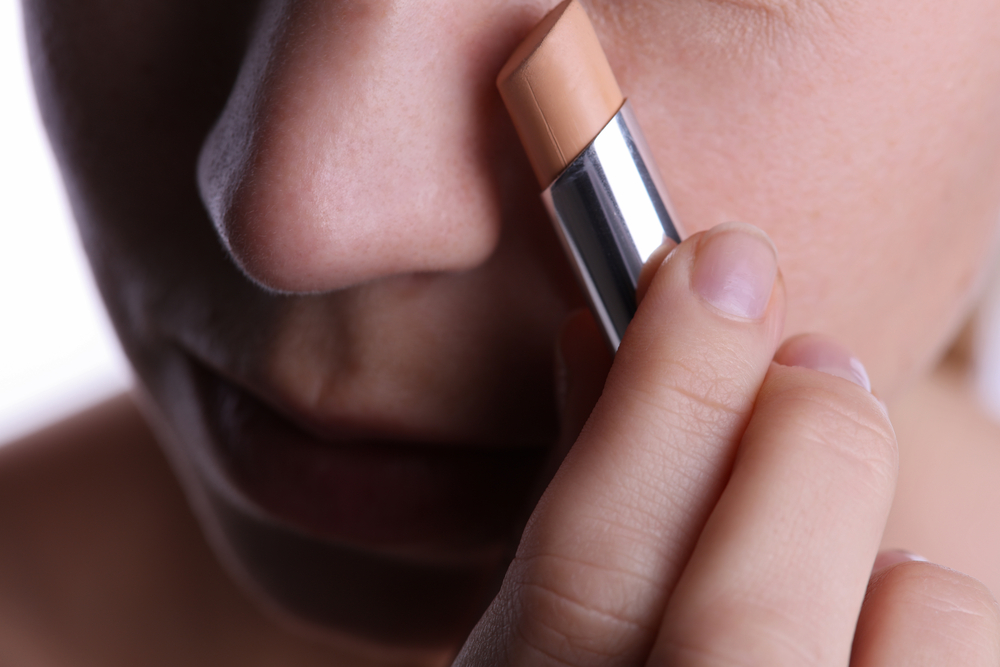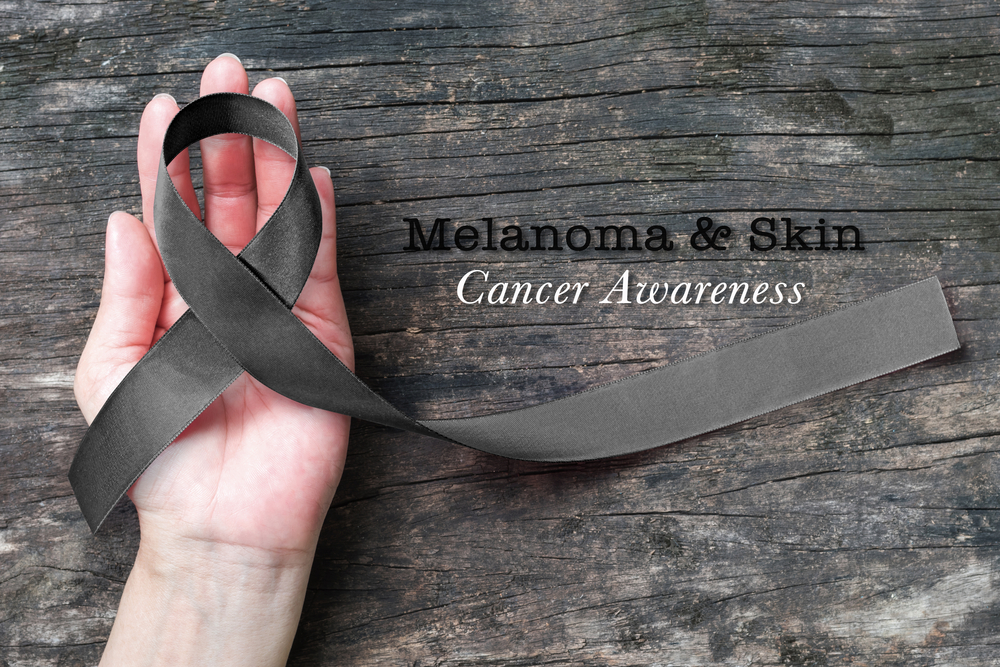- FaceBroken capillaries can be the result of a number of different issues; a very common one being too much sun exposure
- There are many professional and at-home treatments that can help remove broken capillaries from the face or other parts of the body.
- Wear sunscreen to protect your skin from the sun and to limit spider veins on the face
What are broken capillaries?
Broken capillaries, commonly known as spider veins or by the medical terminology telangiectasias, are tiny veins that can appear through the skin on your face, legs, and chest. Although these spidery, reddish blemishes don’t pose a serious health risk, many individuals choose to have them treated for cosmetic reasons.
What causes broken capillaries?
Burst blood vessels can be the result of a number of different issues, the most common being damage to the skin from irritation, inflammation, and repeated exposure to the sun. While some of the common causes are preventable, others are beyond control.
Genetics
“This is one of the prime factors responsible for the development of dilated capillaries,” says facial plastic surgeon Dr. Vartan Mardirossian from Jupiter, FL. “If parents or immediate relatives of a patient have a history of varicose veins, then a genetic cause is very likely. This can also be a predisposition that can combine with other factors.”
Pregnancy
Thanks to the action of estrogen and progesterone, during pregnancy women have more blood running through their bodies. This results in the enlargement of capillaries, which leads to the development of broken vessels, or spider veins, that typically appear on the abdomen.
Hormones
In addition to pregnant women, women passing through the menopausal stages and children going through puberty may also develop spider veins as their bodies try to adjust to changes in hormone levels.
Liver damage
If the ability of the liver to break down estrogen and progesterone is impaired, then the levels of those hormones may rise, causing dilation in the capillaries.
Leg injuries
Broken capillaries appear on people who suffer from elevated or reduced blood flow due to leg injuries. Those who spend a long time standing, followed by prolonged periods of sitting or lying down, are also more susceptible.
Skin damage
The skin region surrounding the face is more likely to suffer damages than other parts of the body, which is why it’s more common to find broken capillaries on the face. Spider veins may form due to facial skin damage caused by wind, changes in temperature and even glasses pressing on certain areas of the face.
Sun damage
Repeated exposure to the sun is also a key cause of broken capillaries. “The constant damage to the skin caused by chronic sunburn forces it to try to recover and repair itself by making new vessels,” says Beverly Hills dermatologist Dr. Tsippora Shainhouse. “The UV also breaks down collagen, making the vessels more apparent.”
Inflammatory triggers
Inflammatory triggers can contribute to facial redness in some people. Common triggers include hot weather, hot showers, spicy foods, hot foods and drinks, coffee, and alcohol.
Medical conditions
A skin condition known as rosacea can also be associated with facial redness and flushing, which can lead to new red vessels and even pimples.
Age
As we age, there are changes in the collagen of both the skin and the small capillaries, which may cause them to weaken and become more visible.
Lifestyle factors
People that are on their feet all day may be more prone to spider veins on their legs. People that are exposed to environmental irritants such as smoking and pollution often have more free radical formation, making them more prone to spider veins, especially on the face.
» Concerned about how your lifestyle or environment affect your condition? Meet our Medical Review Team and get their opinion for their professional opinion.
Treatments for broken capillaries
As you can see by the long list above, there are many possible explanations for broken capillaries, which is why it is advised that you consult with a qualified professional who can recommend the best treatment option for your individual situation.
Laser treatments
“PDL and KTP lasers are very effective — these laser treatments target vessels and ‘destroy’ them,” says Shainhouse. Lasers produce intense beams of light, that are different colors and wavelengths, that vary in their intensity and pulse duration. When undergoing treatment, a handpiece is held near your skin where it transmits the laser frequency.
There is a little discomfort and irritation to be expected from laser therapy, as it can feel like someone is constantly flicking a rubber band into your face. A topical anesthetic is often used to decrease sensitivity and discomfort. Additionally, “lasers can leave a purple, bruise-like discoloration,” says Shainhouse. “Though this does fade within a week or so.”
Intense pulsed light (IPL)
“In my opinion, the most effective treatment for broken capillaries of the face and legs is Sciton’s BBL device,” says Schwartz. “This device delivers intense pulsed light directly into the capillaries and the heat causes the vessels to shrink and fade.”
Like laser, a topical anesthetic is often applied prior to IPL treatment to avoid any pain and discomfort. “The procedure itself takes anywhere from two to three minutes for the spider veins around the nose to approximately 15 minutes for a cluster of spider veins on the legs,” adds Schwartz. “Treatments may need to be repeated two or three times to get the best aesthetic result.”
>>Read more on the comparison between Laser and IPL skin treatments
Sclerotherapy
According to Schwartz, sclerotherapy is an option for treating the legs. This treatment entails a salt solution being injected into the affected veins, which subsequently cause them to collapse and stick together, clearing them from the legs.
While this treatment has been in use since the 1930s, it is still among the most effective options available for treating leg veins. A recent study found that sclerotherapy is better suited to treating spreading spider veins than certain modern laser treatments.
Topical treatments
Shainhouse says that two particular topical treatments may be useful. Mirvaso (brimonidine) is a topical gel that temporarily shrinks the red vessels and makes the skin appear less red. It’s applied directly to the skin and takes approximately 30 minutes to take effect. The treatment can last up to 12 hours, with a peak efficacy six to eight hours following application.
Rhofade (oxymetazoline hydrochloride) is a new topical agent recently approved by the FDA. It temporarily shrinks the vessels and reduces facial redness. It’s best applied daily and has been demonstrated to last for 12 hours.
Chemical peels and retinoids
Dermatologist Dr. Jessie Cheung from Willowbrook, IL suggests that “chemical peels and retinoids will indirectly help with the broken blood vessels by building collagen to strengthen their support structure.”
“Chemical peels stimulate skin regeneration by controlled trauma. Deeper chemical peels will deliver more results, but you will have more downtime. A series of superficial chemical peels, spaced a few weeks apart, will strengthen your skin over time,” adds Cheung.
Retinoids such as Retin-A (tretinoin), a prescription facial cream, has a direct effect on skin cells. By keeping them healthy and stimulating collagen production — with the added benefit of reducing wrinkles — retinoids manage broken capillaries.
How can you prevent broken capillaries?
“Wear sunscreen to protect your skin from the sun and to limit spider veins on the face,” says Mardirossian. “Exercise regularly to improve your leg strength, circulation, and vein strength. Focus on exercises that work your legs, such as walking or running. Control your weight to avoid placing too much pressure on your legs, and alternate the pressure on your legs when standing up for a long time.”
Additionally, Cheung says that horse chestnut extract has been shown to aid with poor circulation by strengthening blood vessels. Horse chestnut (Aesculus hippocastanum) is a plant extract available as supplements or topical gel.
When it comes to preventing broken capillaries, simple lifestyle advice offers the best protection.
» Not every treatment option may be appropriate for your case. If you’re considering correcting the appearance of spider veins on your body or face, you can meet our medical review team to get a second opinion .
At-home treatments
Treating popped blood vessels at home can be difficult, as the underlying issue for the redness may be hard to determine without the help of a medical professional. That said, there are a number of options available to help reduce redness and many target multiple causes of broken capillaries.
Aloe vera
The extract of this succulent plant has been recommended for a number of skin issues. Aloe is used to treat sun burns, as an anti-aging agent, and, of course, as a topical solution for broken capillaries.
Vitamin C and lysine
Anecdotal evidence suggests that taking vitamin C and lysine supplements can help to reduce the appearance of burst blood vessels. The amount used should not exceed your daily recommended dose, but ensuring that you meet this dose may help to reduce redness.
Vitamin E
Applying vitamin E to the affected area daily may help to speed up the healing process of blood vessels. While applying vitamin E topically is ideal, oral supplements may also help to repair damage.
Creams and serums
Though vitamin C and E, lysine, and aloe may all play a role in eliminating redness, more complex creams and serums have been specifically created to manage the issue.
These creams and serums typically work with a greater efficiency than other at-home alternatives and some can even help to prevent broken capillaries altogether.
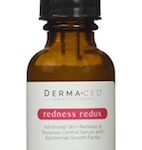
Dermaced Redness Redux
This serum was created to address several of the underlying issues that cause redness in the first place. By reducing inflammation, repairing damage, and helping your skin heal itself back to its natural radiance, Dermaced Redness Redux is a three-pronged approach to treating broken capillaries. The serum’s key ingredient is sea kelp bioferment, a natural moisturizing and healing agent.
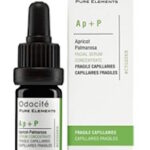
Odacité Ap+P Fragile Capillaries Facial Serum Concentrate
Using time tested ingredients, this serum not only manages redness, but also seeks to prevent future issues by strengthening capillary walls. Apricot oil and palmarosa oil, two of the main ingredients in Ap+P, have been used in Chinese medicine for centuries to treat inflammation. The serum also contains vitamin E, another common remedy to treat redness. Ap+P can be mixed into your regular skincare routine as a preventative measure, or used alone to treat redness directly.
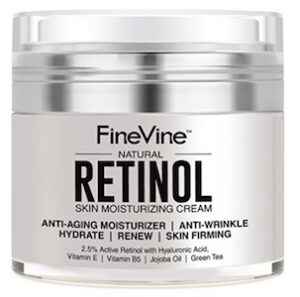
FineVine Retinol Moisturizer Cream for Face and Eye Area
This cream is an all in one solution to many common skin issues. Using 2.5% active retinol, hyaluronic acid, and vitamin E, the cream can be used day and night to prevent fine lines, wrinkles, dryness, and, of course, redness.
As an added bonus, the cream may even correct uneven skin tones and prevent dark spots from forming.





